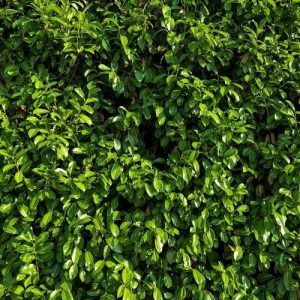The best distance between the fence and hedge is five feet. This gives clearance for trimming, mowing, or using power tools. If this isn’t possible, you can place the edge of the hedge one inch from the fence.
However, if the bark is rotten on either side of this gap, it could splinter and allow pests to infest your garden area. It’s also essential to ensure that no branches are growing inward toward your house, as these can damage gutters and fascia boards over time.
Hedges are often used as a barrier between properties, but knowing how close to the fence you can plant them is essential. To avoid disputes with neighbors, hedges should ideally not intrude on their land by more than three feet (1 meter). However, there are exceptions.
Determining the correct height and distance is an issue involving legal rights and obligations where many different problems may need to be considered. !!! It’s always best if both parties agree on what they will do before any work starts! !!! If you want planning permission for planting a hedge, you should generally consult your local planning authority.
How to plant a hedge?
This question is asked by many who have a hedge being delivered and want to know how far from the fence it should go. Several factors will determine this, but in general terms, it can’t be planted less than 75cm from the fence for safety reasons.
To plant a successful hedge, you need to dig down 50-75 cm or two spades’ depth plus a bit more, remove all vegetation and take out a trench where the roots will sit, ensuring that there are no tree roots in this area if possible. If planting close to existing trees, then substantial root disturbance may occur, which might not matter depending on your soil type and your maintenance schedule going forward- considering likely competition from vegetable plants such as potatoes and carrots, for example.
If you have a mulberry tree next to your fence and agree to take out the hedge long enough to get rid of all mulberry roots, then you should be fine without any other form of protection against root intrusion.

If not, an option would be to consider running wire around the edge just below surface level, stopping it at points along its length, and inserting the shoots into these pockets rather than having them graze over top and risk being pulled up or broken off during growth or maintenance work.
Another factor is that trees will grow beyond their height when they mature and put pressure on hedges with time – this needs to be taken into account too. Few deciduous species allow trimming (or shearing) to a height of about 1.80 m from the ground, so that might help to work out a positioning – a decent size tree will exert some pressure on a new hedge despite being some distance away, but not enough to matter in most cases.
And finally, there is the question of climate, we can’t possibly judge how far your garden is from the equator and what temperature range you get throughout each year. In hot climates with limited rainfall, any new planting needs irrigation during establishment if possible, whereas northern areas need frost protection at times.
- How do I choose a garden tool?
- Benefits of using the tiller to level yard
- Is clay soil easier to dig wet or dry?
Who should maintain the other side of your hedge?
Because of how fast growing your hedge is going to be, you should always be thinking about the maintenance of it! Because of this, having a plan for pruning the other side (not the side of your property) is important. This will really come down to an agreement between yourself and the neighbor, so make sure to have that conversation ahead of time, rather than after it grows up.
Your neighbor may like the look of the shrub, and have no problem doing it themselves, or they may not want to deal with is and ask you. to maintain it. Because of this, you should have in writing that you are allowed to go on their property to maintain it and more. Of course, you should consult a lawyer for more information on this.
Frequently Asked Questions
Will hedges damage fence?
Hedges for the most part will not damage a fence! They don’t have roots that are quite large enough to push their way through harder surfaces like trees can. However they can grow quite large if not maintained, which can lean and cause damage to fences that may not be super strong, so make sure if you are planting a hedge next to a fence, that you will also be maintaining it.
Is a hedge better than a fence?
This really comes down to personal preference. Hedges are going to be something that is considerably nicer, and more natural looking! However they will not really keep animals or even people for that matter from traveling through the hedge. Basically it will help with privacy of sight, but not much else. If you want to keep people and animals out, then a fence is going to be the better option.
What is the fastest growing hedge?
Hedges in general are going to be some of the fastest growing larger plants, however there are some that grow faster! You can do some research into shrubs like leylandii, laurel and the Red Twig Dogwood. All of these are quick growing, and great options if you need privacy quickly.
Conclusion
Hedges are an awesome option for people that are looking for privacy! If you don’t like that neighbors fence, and the way it looks, it is very possible that you can plant a hedge alongside it to hide it, and give your backyard an awesome look. However before you do, make sure you are keeping the right distance from the fence, not only to keep from damaging your neighbor’s fence, but also to give the hedge enough room to grow and looks its best.















